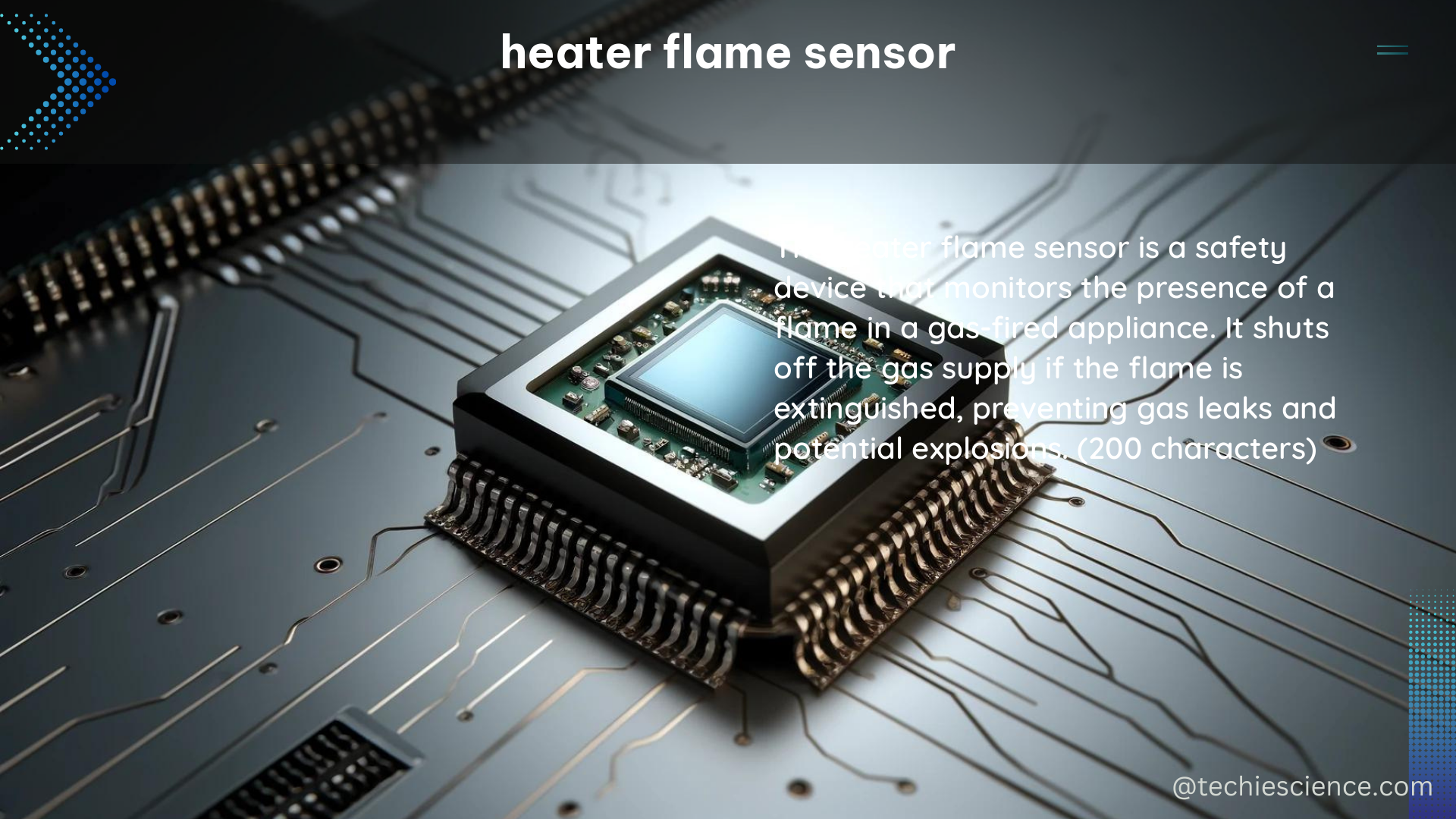A flame sensor is a critical component in gas heating systems, responsible for detecting the presence of a flame and ensuring the safe and efficient operation of the system. This comprehensive guide will delve into the technical details of heater flame sensors, their principles of operation, and the steps to properly maintain and troubleshoot them.
Understanding the Heater Flame Sensor
The heater flame sensor works on the principle of flame rectification, where a low AC voltage is applied to a metal rod or wire, known as the flame rod. When the flame rod is inserted into a proper flame, the voltage is converted to a DC voltage as it travels through the flame to ground. This DC voltage can be measured in microamps (μA) using a specialized meter capable of detecting such small currents.
Technical Specifications of a Heater Flame Sensor
| Specification | Range |
|---|---|
| Measuring Range | 0.5 to 10 μA |
| Typical Readings | 2 to 6 μA |
| Principle of Operation | Flame Rectification |
| Material | Metal Rod or Wire |
| Coating | Special Coating to Prevent Rapid Dirt Buildup |
| Positioning | Extends into the Flame and Connects Back to the Furnace Board |
In a typical gas heating system, the flame sensor should read between 0.5 and 10 μA, with readings between 2 and 6 μA being considered normal. If the flame sensor reads anything under 5 μA, it is likely that the sensor is dirty and requires cleaning.
Cleaning the Heater Flame Sensor

Proper cleaning of the heater flame sensor is crucial to ensure its reliable operation and the safe functioning of the heating system. Follow these steps to clean the flame sensor:
-
Ensure the Flame Sensor is Cool to the Touch: Before attempting to clean the sensor, make sure it has cooled down completely to avoid the risk of burns.
-
Use a Non-Abrasive Cleaning Material: Employ a 3M Scotchbrite pad or a similar non-abrasive material to gently polish the surface of the flame sensor. Avoid using abrasive tools or materials, as they can damage the special coating on the sensor, which is designed to keep it clean and prevent rapid dirt buildup.
-
Reinstall the Flame Sensor and Measure the Flame Signal: After cleaning, reinstall the flame sensor and take another reading to ensure the flame signal has improved. The reading should now fall within the recommended range of 2 to 6 μA.
It is essential to note that the flame sensor must be properly positioned within the flame to function correctly. If the sensor is obstructed by debris or carbon buildup, or if it is not positioned correctly, it may not be able to detect the flame accurately, leading to safety concerns and inefficient operation of the heating system.
Troubleshooting Heater Flame Sensor Issues
If the flame sensor is not functioning correctly, there are a few common issues that you can troubleshoot:
-
Low Flame Signal: If the flame sensor reading is below the recommended range of 2 to 6 μA, it is likely that the sensor is dirty and requires cleaning. Follow the steps outlined in the “Cleaning the Heater Flame Sensor” section to address this issue.
-
Flame Sensor Positioning: Ensure that the flame sensor is properly positioned within the flame and is not obstructed by any debris or carbon buildup. Adjust the sensor’s position if necessary to ensure it can accurately detect the flame.
-
Faulty Flame Sensor: If the flame sensor continues to malfunction after cleaning and proper positioning, it may be a sign of a faulty sensor that needs to be replaced. Consult a professional HVAC technician to diagnose and replace the sensor if necessary.
Preventive Maintenance for Heater Flame Sensors
To ensure the long-term reliable operation of your heater’s flame sensor, it is recommended to perform regular preventive maintenance. This includes:
-
Annual Inspection and Cleaning: Schedule an annual inspection and cleaning of the flame sensor as part of your heating system’s regular maintenance routine.
-
Monitoring Flame Signal Strength: Regularly check the flame sensor’s signal strength to ensure it is within the recommended range. This can be done using a microamp meter or by consulting with a professional HVAC technician.
-
Addressing Potential Issues Promptly: If you notice any changes in the flame sensor’s performance or the heating system’s operation, address the issue promptly to prevent further damage and ensure the safety of your home.
By understanding the technical details of heater flame sensors and following the recommended maintenance procedures, you can ensure the safe and efficient operation of your home’s heating system for years to come.
References:
- Deppmann, “Measuring Flame Signal and Cleaning Flame Sensors,” 2017. [Online]. Available: https://www.deppmann.com/blog/service-tip-of-the-month/measuring-flame-signal-cleaning-flame-sensors/.
- HVAC School, “Flame Sensing – The Basics,” 2021. [Online]. Available: https://hvacrschool.com/flame-sensing-the-basics/.
- Electronics Stack Exchange, “How can I bench test a Flame Sensor (Flame Rectification),” 2016. [Online]. Available: https://electronics.stackexchange.com/questions/243910/how-can-i-bench-test-a-flame-sensor-flame-rectification.

The lambdageeks.com Core SME Team is a group of experienced subject matter experts from diverse scientific and technical fields including Physics, Chemistry, Technology,Electronics & Electrical Engineering, Automotive, Mechanical Engineering. Our team collaborates to create high-quality, well-researched articles on a wide range of science and technology topics for the lambdageeks.com website.
All Our Senior SME are having more than 7 Years of experience in the respective fields . They are either Working Industry Professionals or assocaited With different Universities. Refer Our Authors Page to get to know About our Core SMEs.